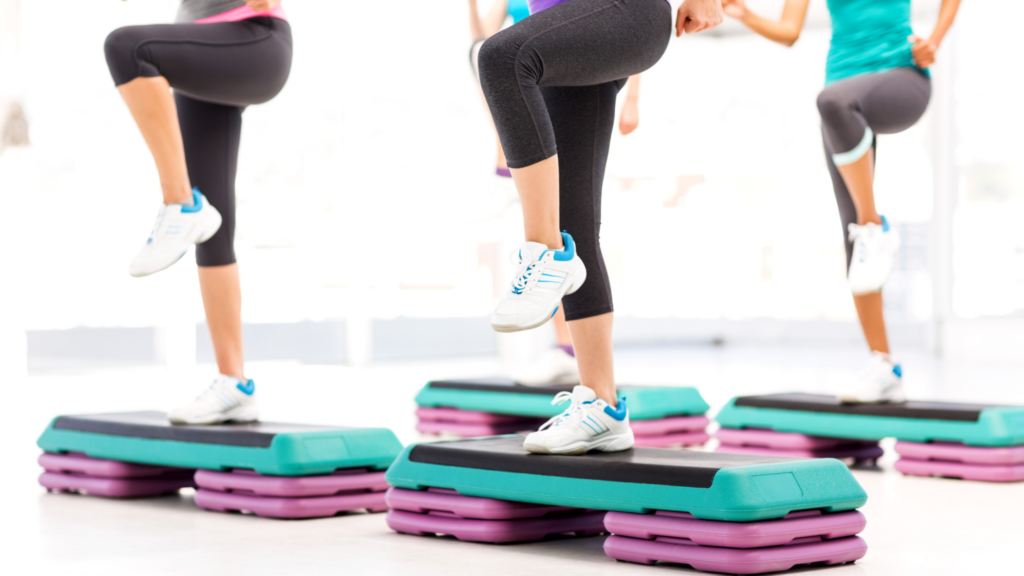Are you looking for cardio workouts for heart health? You have come to the right place.
You’ve probably heard that exercise is a great way to keep your heart healthy. By improving blood flow, it can help to lower your blood pressure, as numerous studies have proven, but which exercises should you choose?
Because your heart is one of the most important organs in your body, it’s important to take care of it.
In this article, we’ll provide more insight into cardio workouts that promote heart health and describe our top three exercises to encourage a healthy cardiovascular system.
Why Is Adopting an Exercise Routine Important for Those with Heart Disease and Elevated Blood Pressure?
Before delving into the various exercises you should try, let’s first talk about why aerobic exercise is important for you.
The truth is that cardio workouts offer a plethora of benefits. They can increase blood circulation, reduce cholesterol and blood pressure, control weight, and lower the risk of contracting type 2 diabetes. This reduces the likelihood of developing heart disease.
If you already have poor heart health and high blood pressure, regular exercise can help to raise your heart rate., which is crucial for getting your high pressure and cholesterol levels under control.
A stronger immune system, better mood, higher stamina, and the ability to remain independent and active as you age are additional advantages of aerobic exercise.
Should You Warm Up and Cool Down Before and After Your Exercise Routine?

Exercise also requires warming up and cooling down, two crucial aspects that are frequently overlooked.
Warm Up Before Your Workout
Before exercising, you must warm up for your blood vessels to expand and ensure your body’s muscles have enough oxygen.
Also, it raises the body temperature of your muscles to maintain the appropriate degree of flexibility and balance, which enhances their performance during activity. Warming up helps to gradually increase your heart rate, which lessens the strain on the heart. This will also minimize the possibility of experiencing irregular heartbeats when exercising.
Cool Down After Your Workout
After working out, it’s equally necessary to cool down. Your heart rate rises, your body temperature goes up, and your blood vessels dilate after physical activity. You can feel lightheaded or ill if you stop too suddenly.
Following a workout with a proper cool-down regimen will lessen these occurrences, enable a gradual recovery of your vital signs, and help you return to normal.
Stretching exercises are advised during cool-down because they can aid in lowering the accumulation of lactic acid in the muscles. This can lessen cases of cramps and stiffness.
Our Top Three Workouts for Good Heart Health
Want to reduce your own body weight and maintain a healthy heart? Here are three exercises to try.
Resistance Training
Resistance training, usually referred to as strength training, can aid with body composition. It can promote fat loss and the development of lean muscle mass, which is important if you’re someone who has high levels of body fat.
Strength training, in addition to aerobic exercise, has been shown to increase high-density lipoprotein (HDL), which is good cholesterol, while lowering low-density lipoprotein (LDL), or bad cholesterol.
During resistance training, the primary muscular groups in your extremities, chest, shoulders, hips, abdominal region, and back should all be worked.
Strength Training Exercises to Add to Your Exercise Routine
We recommend performing two to three sets of each of the exercises mentioned below:
- Training with resistance bands.
- Weight training with gym equipment.
- Lifting free weights.
- Performing exercises such as push-ups, lunges, and sit-ups that do not require any additional equipment.
- High-intensity interval training.
Two days of non-consecutive exercise per week should be sufficient. Make sure you’re warming up and cooling down before and after your workout!
Aerobic Exercise
Cardio, sometimes referred to as aerobic exercise, offers a number of heart health benefits. It increases your stamina and is highly recommended because it raises your heart rate, which will cause you to work up a sweat.
They also support reduced blood pressure, improved circulation, and promote blood sugar regulation, which is essential if you have diabetes.
Moderate Intensity Workouts to Try:
If you’re starting out, we recommend that you start slowly and gradually pick up the pace as your body becomes more accustomed to regular exercise. Here are a few beginner-friendly recommendations:
- Swimming
- Riding a bicycle
- Walking
Level Up Your Cardio Exercise Program
When you’re ready to kick it up a notch, here’s what you should try:
- Brisk walking
- Hiking uphill
- Jogging
- Dancing
- Playing a sport
If you’re choosing a moderate-intensity workout, it should last 30 minutes, five days a week. However, if you’re doing more strenuous exercise, 30 minutes three days per week is sufficient to keep your heart healthy.
Stretching Exercises
Stretching or balance exercises and other flexibility-enhancing workouts may not immediately improve heart health, but they lower your risk of cramps, joint pain, and muscular stress when you perform heart-healthy routines.
Exercises designed to improve balance and mobility can also assist elders in maintaining stability and avoiding falls.
Examples of heart-healthy exercise include the lying hamstring stretch, shoulder extension, and quad knee extensions.
There are several exercises you can choose from to add to your workout. Make sure you’re stretching all the major muscle groups and warming up and cooling down before and after your exercise routine.
The Bottom Line

Keeping your heart healthy is one of the most important things you will ever do. Numerous studies have proven the effectiveness of physical activity on the cardiovascular system, so finding an exercise regime that works best for you is essential.
We recommend strength training, aerobic exercise, and stretching to keep the blood pumping and lower blood pressure and cholesterol levels.
Make sure you’re warming up and cooling down properly to prevent injury and starting out slowly.
Sources:
https://www.ncbi.nlm.nih.gov/pmc/articles/PMC6159802/
https://www.health.harvard.edu/heart-health/the-many-ways-exercise-helps-your-heart





